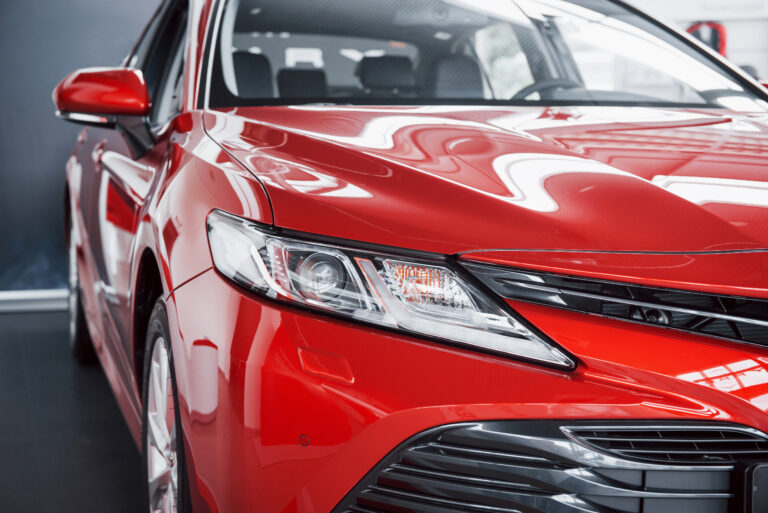
Discover how AI and sensors enable predictive car maintenance, helping you avoid costly repairs, extend your vehicle's life, and drive safer every day.
Imagine if your car could warn you before something goes wrong — before your brakes wear out, your battery fails, or your engine overheats. That future is here, thanks to predictive car maintenance powered by AI and sensors. This technology is not only revolutionizing the way we maintain vehicles but also saving car owners thousands by avoiding breakdowns and expensive repairs.
In this article, we’ll break down how predictive maintenance works, what technologies drive it, and why it’s a game-changer for both everyday drivers and commercial fleets.
What Is Predictive Car Maintenance?
Predictive car maintenance is a data-driven approach that uses AI, machine learning, and real-time sensor data to predict when a car part will likely fail — before it actually does.
Unlike traditional maintenance (reactive) or scheduled maintenance (preventive), predictive systems monitor the vehicle’s actual condition, usage, and environment. This leads to smarter servicing decisions, reducing unnecessary repairs and maximizing the lifespan of every component.
How It Works: The Technology Behind Predictive Maintenance
1. IoT Sensors & Telematics
Modern cars are equipped with sensors that track:
- Engine temperature
- Tire pressure
- Brake pad wear
- Battery voltage
- Fluid levels
These sensors continuously feed real-time data to the car’s internal computer or external cloud platforms.
2. Cloud and Edge Computing
With the rise of 5G and cloud computing, massive data sets can now be processed rapidly. Some systems even use edge computing to process data locally, enabling faster diagnostics.
3. Artificial Intelligence & Machine Learning
AI algorithms analyze patterns and detect anomalies — for example, a small vibration pattern that indicates a failing wheel bearing. Machine learning improves over time, getting better at predicting failures with each data input.
Real-World Examples of Predictive Maintenance
- Penske Trucks: Uses AI to analyze 300 million data points daily, reducing vehicle downtime and optimizing fleet management.
- Tesla & BMW: Offer over-the-air diagnostics and predictive software that alerts drivers of issues before they arise.
- Volvo: Integrates predictive tech in fleet services to reduce repair costs and improve safety.
Benefits of Predictive Maintenance
- Cost Savings: Avoid emergency repairs and part replacements.
- Improved Safety: Issues are caught before they pose a danger.
- Reduced Downtime: Especially useful for fleets and commercial drivers.
- Extended Lifespan: Components are maintained exactly when needed.
- Eco-Friendly: Optimizing maintenance reduces waste and emissions.
Challenges and Limitations
- Initial Investment: Advanced tech systems require upfront cost.
- Data Management: High data volumes need structured storage and security.
- Training Gaps: Technicians need new skills to interpret AI diagnostics.
However, car manufacturers and fleet operators are rapidly adapting, offering tech training and phased rollouts to handle these challenges.
The Future of Predictive Car Maintenance
1. Prescriptive Maintenance
Going beyond prediction, AI will soon recommend exact actions to fix problems, reducing guesswork.
2. Digital Twins
A real-time digital copy of your car that mirrors wear and tear for ultra-accurate diagnostics.
3. More Consumer Tools
Affordable OBD2 scanners and apps like Carly, Torque Pro, and FIXD are making predictive tools accessible to everyday users.
What Car Owners Should Do Now
- Choose vehicles that support advanced diagnostic tools
- Install apps that sync with your car’s OBD2 port
- Keep firmware/software updated for optimal AI performance
- Schedule diagnostics even if your dashboard isn’t flashing
Final Thoughts
Predictive maintenance isn’t just a buzzword — it’s a smarter, safer, and more cost-effective way to own a car. Whether you’re managing a high-performance sports car or a family SUV, embracing AI-powered maintenance can prevent costly surprises and keep your vehicle running smoothly for years to come.
If you want more expert car care insights, check out our full Maintenance & Care section for actionable tips and the latest innovations.
Also, explore how performance and maintenance align in sports cars:
- Lamborghini STO vs Huracán EVO: Key Differences
- Ferrari F8: Bold Design & Innovative Features Predictive maintenance isn’t just a buzzword — it’s a smarter, safer, and more cost-effective way to own a car. Whether you’re managing a high-performance sports car or a family SUV, embracing AI-powered maintenance can prevent costly surprises and keep your vehicle running smoothly for years to come.
FAQs
Q1: What’s the difference between predictive and preventive maintenance?
Preventive maintenance is scheduled at regular intervals regardless of vehicle condition. Predictive maintenance uses real-time data to detect problems before they occur, offering a smarter and more efficient alternative.
Q2: Do I need a special type of car for predictive maintenance?
Modern vehicles, especially those built after 2018, typically have the sensors and computer systems needed. Some older models can be upgraded with aftermarket OBD2 tools.
Q3: Are predictive maintenance systems expensive?
While some high-end systems are integrated into premium vehicles, affordable diagnostic apps and devices are available for everyday drivers.
Q4: Can predictive maintenance prevent all types of breakdowns?
Not all — but it can catch a majority of common mechanical issues before they turn into costly repairs.
Q5: Is this technology only for fleets or commercial vehicles?
No. While fleets benefit greatly, individual car owners can also use predictive maintenance tools to monitor their car’s health.






